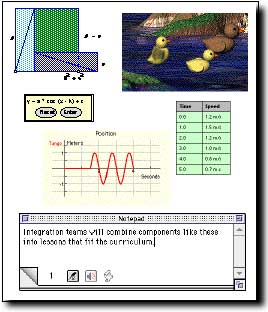Stanford University
Professor of Education and Learning Sciences
roy.pea@stanford.edu
I joined Policy Division Vice President Barbara Means and a small group of colleagues at SRI International (formerly Stanford Research Institute), and developed strategic plans, grants, and new ventures in K-12 learning and teaching that grew CTL from 8 staff and $1Mil per year in funding in 1996 to 50 staff and $10 Mil per year in 2001, with many partnership projects engaging leading researchers and institutions throughout the United States.
My primary research work during this period centered on five areas:
(1) CILT. I have been directing since 1997 the multi-institutional Center for Innovative Learning Technologies (http://cilt.org), funded by the National Science Foundation, with the aim of creating a national knowledge network for catalyzing best practices and new designs for improving K-14 learning with technologies among researchers, schools, and industries.
(2) ESCOT. I worked with Jeremy Roschelle and Jim Kaput, and later, Chris DiGiano, to design and conduct the ESCOT Project, funded by NSF, on developing and studying use of middle-school mathematics software components and activities under a new distributed development model.
(3) Teachscape.com. I co-founded with Mark Atkinson and others the for-profit company Teachscape (formerly Minerva Project), a comprehensive platform to support online and offline teacher professional development using video case studies of exemplary teaching practice, online community support, and various other learning innovations. My work at SRI included developing the user requirements, design prototypes, research infrastructure and partnership strategies, and the many facets of raising financing and building a new venture that seeks to scale and make sustainable research-informed strategies for teacher and student learning.
(4) WorldWatcher and CoVis. I continued collaborating with my Northwestern colleagues on this projects on learning and teaching involving scientific visualization environments for inquiry-based learning.
(5) WILD: Wireless Internet Learning Devices. Working with nearly 10 of my CTL colleagues, I have worked closely with WILD Project champion Jeremy Roschelle to conceptualize, fund, and strategize a range of projects using ubiquitous low cost computers to support learning and teaching. Our collaborations continue in the CollaboraMath Project at Stanford.

